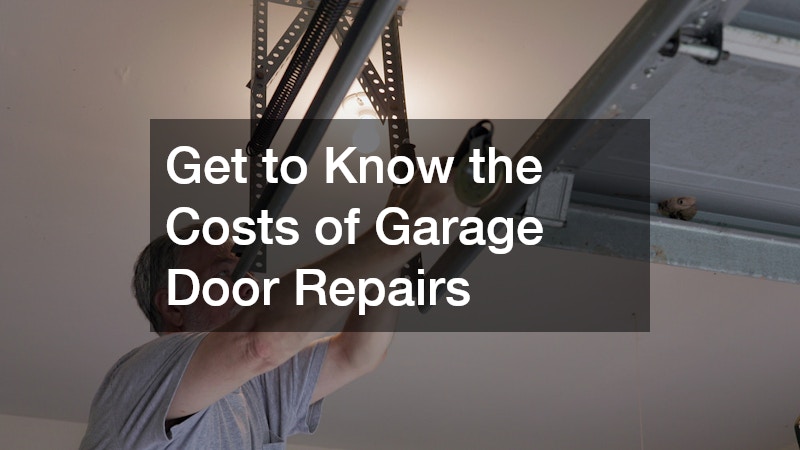
When a garage door sticks, screeches, or stops altogether, the first question is usually about price. The answer depends on what failed, how hard it is to access, and whether the fix involves safety-critical parts. Understanding the main cost drivers helps you budget confidently and avoid surprises. With a little prep, you can compare quotes fairly and choose work that protects your home, your schedule, and your wallet. That is the value of demystifying garage door repairs before you book a visit.
The Biggest Factors Behind the Final Invoice
Three variables shape the total: the specific problem, the parts required, and the difficulty of the job. A quick alignment or sensor adjustment takes less time than replacing a torsion spring, a cable set, or damaged sections.
Access matters, too. A cluttered garage, tight headroom, or custom tracks can add labor minutes that raise cost. Finally, emergency calls outside normal hours may include premiums for rapid response.
Common Problems and Relative Complexity
Photo eye misalignment, blocked tracks, or a misprogrammed opener are usually straightforward fixes. Bent tracks, worn rollers, or frayed lift cables require more careful work and precise tuning. Spring replacement is among the most technical tasks because it involves stored energy and exact balancing. If the opener’s logic board or motor fails, the technician may troubleshoot first, then replace the unit if parts are obsolete. Each step up in complexity typically means more time, more safety checks, and a higher line item for labor.
Parts, Materials, and Door Type
Not all doors are built the same, and parts are not one-price-fits-all. Heavier insulated or wood doors need stronger hardware, which can cost more. High-cycle torsion springs, nylon rollers, sealed bearings, and reinforced struts add durability, but they also influence the materials subtotal. Your opener type matters as well. Chain drive units are common and affordable, while belt or direct-drive systems may use different components and control boards with different price points.
Labor, Scheduling, and Travel Considerations
Service companies build labor rates around skill, insurance, tools, and training, and those rates vary by region. Expect standard pricing during business hours, with surcharges for nights, weekends, or holidays. Travel distance and fuel can factor into a minimum service fee, especially for rural addresses. If a return trip is needed because a specialty part must be ordered, some providers credit the second visit, while others bill partial labor again. Clear communication up front helps you control the timing and the cost of garage door repairs without unnecessary back-and-forth.
Safety, Code, and “Hidden” Line Items
Reputable technicians include safety items that protect both the door and the people around it. That might mean replacing cables in pairs, upgrading center bearings, or adding a strut when a panel shows stress. Disposal fees for old parts, haul-away for an opener, or small hardware like fasteners and clips may appear as modest, legitimate charges. Permits are rare for routine fixes, but structural changes or new electrical runs can trigger local rules. Ask what is included so you understand each component of the estimate.
When a Repair Becomes a Replacement
Most issues can be fixed, but some repairs approach the cost of a new door or opener. Cracking or delaminating panels, major track damage, or repeated spring failures on an oversized door are signals to evaluate long-term value. If your opener lacks modern safety features, swapping it for a current model may reduce noise, add smart controls, and improve reliability. Think about energy, curb appeal, and warranty coverage as part of the math, not just the immediate line items. In some cases, choosing replacement avoids stacking future garage door repairs over the next few seasons.
How To Get a Precise, Comparable Quote
Start with a clear description: the door size, material, insulation, opener brand, and what you saw or heard when the problem began. Photos of the springs, cables, tracks, and opener model sticker help a dispatcher price parts accurately. Ask for an itemized estimate showing labor, materials, trip fees, and any after-hours charges. Confirm whether parts are new, in pairs when required, and backed by a written warranty. A crisp scope lets you compare providers on the same terms, rather than guessing from vague ranges.
Price is never just a single number. It is the sum of parts, labor time, access, and urgency, shaped by the age and type of your door and opener. By understanding common fixes, asking for itemized estimates, and planning basic maintenance, you can manage costs with confidence. Choose clear communication, safety-minded practices, and warranties that fit your needs. With that approach, garage door repairs feel less like a mystery and more like a smart, informed decision.




